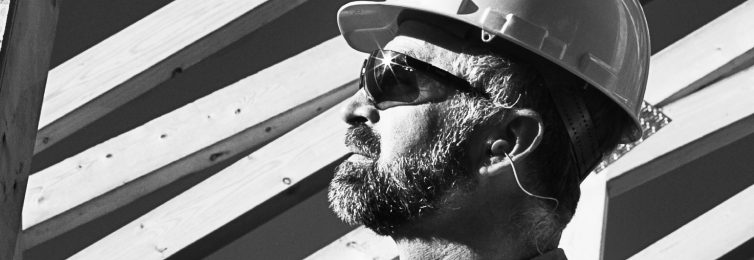Have you ever worked on a job with consistent loud and disruptive noise? How about having to raise your voice to talk to another member of your team? If this rings true, you might have been in a situation with inadequate ear protection.
The National Institute of Occupational Safety and Health, or NIOSH, reports that each year about 22 million U.S. workers are exposed to hazardous noise levels at work. This makes occupational hearing loss one of the most common work-related illnesses in the United States.
The importance of protecting your ears is often overlooked or miscommunicated in training. Michael Faith, Risk Management Consultant at Builders Mutual, joins us as our industry expert to bust a few myths on the topic.
Myth No. 1: If I don’t feel pain or ringing in my ears following a loud noise, my ears aren’t damaged from it.
Hearing loss is a gradual-onset condition. Hearing persistent loud noises may not affect you or your hearing in your 20s, but a lack of ear protection on the job-site can begin to take effect around age 60 or earlier. As the human lifespan continues to grow longer, more individuals are becoming hard of hearing, making occupational hearing loss a growing epidemic.
Workers in the construction industry are frequently reminded of the way loud noises affect hearing, but they seldom see or experience the results until it’s too late. If you know or have met someone on the job who has gradual-onset hearing loss, engage that person as a resource for yourself and your team. Witnessing a firsthand experience can help your team understand the effects and give team members a better sense of the importance of good hearing and hearing protection.
Myth No. 2: The bigger the protection, the better.
Hearing-protection devices are essential, but they’re not all the same. Sometimes, large earmuffs are less protective than earplugs. It’s important to check the decibel level the equipment is designed for when you buy or use a new type of ear protection. This will prevent the misuse of equipment and can protect your ears from long-term damage. In some instances, using both earplugs and earmuffs is necessary.
We recognize that preference for style and comfort carries significance when anyone is selecting ear protection, but you should look closely at the protection capabilities. Check out Builders Mutual’s ear protection Toolbox Talk, which provides information about decibel levels and guides you through the proper protection equipment.
Myth No. 3: There is no easy way to tell whether I need ear protection.
In recent years, technology for evaluating noise levels has become more accessible and functional for the average person. Whether you are on the job-site or listening to music in the car, you can easily check decibel levels by downloading this Sound Level Meter app provided free by NIOSH.
Another way to determine whether your ear protection is working is to simply try it out. If you can still hear the sound, you might need a stronger set of earplugs or earmuffs. Keep in mind that practicing different ways to apply equipment makes for a better fit. Be sure you allow your earplugs time to expand and fill the canal in the ear before testing the sound. Each person puts on earplugs differently, so experiment and find the most effective way for you.
Ultimately, awareness of the need for protection is the first step in preventing gradual-onset hearing loss. Knowing the volume of the noises around you and the day-to-day impact is a tool that you can use for yourself and the members of your team as well.
When they are informed and aware, team members can look down the road and be prepared and confident when they need to choose ear protection on the job-site.




 Find an
Find an